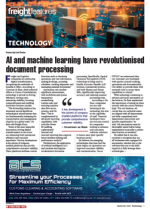The expansion of 5G networks has ushered in a new era of faster speeds and lower latency, unlocking a host of new applications for the Internet of Things (IoT) in real-time tracking and marketplace integration. As ports and customs authorities embrace these advancements, they are incorporating smart technologies to better manage traffic, streamline customs processes and boost overall performance.“The integration of sensors, data analytics and automation are driving innovation, with the South African Revenue Service (Sars) piloting the One-Stop Border (OSB) concept at various ports. This progressive approach is also being adopted by neighbouring countries like Botswana and Namibia, further enhancing the efficiency and security of regional trade,” said Michael Henning, general manager of Easy Clear. “Technology is not only transforming the freight industry but the supply chain as a whole. The adoption of technology and online platforms facilitates easier and faster connections between shippers, carriers and brokers and includes tools enabling quotations, bookings and managing shipments.”Henning highlighted the diverse and innovative applications of technology across different sectors, tailored to specific modalities and role-players. “The surge in e-commerce has driven the integration of retail online platforms with payment portals and customs broker solutions, automating both customs clearance and client payment processes,” he explained. “This seamless data sharing extends to last-mile delivery systems, ensuring that information is captured accurately and only once. This approach not only reduces costs but also meets the growing consumer demand for real-time tracking and near-instant delivery.”The freight transport and cross-border sector is undergoing significant transformation as transporters and subcontractors increasingly seek advanced solutions for vehicle tracking, route planning and data management. “In particular, local fresh produce and perishable goods growers, exporters and freight forwarders face mounting pressure to comply with stringent regulations enforced by industry bodies such as the PPECB and DALLRD.”Henning said to address these challenges Easy Clear had successfully developed and integrated a perishable export solution tailored for the cold chain. This new system allows businesses to request and obtain export and phytosanitary certificates, as well as complete the export customs declaration, all from a single platform. This integration offers substantial benefits by streamlining what was previously a complex and time-consuming process involving multiple platforms.According to Henning, there are several emerging technologies that are making an impact on operations, most notably the IoT, with real-time tracking, condition monitoring and predictive maintenance. Artificial intelligence and robotic process automation have enabled the automation of repetitive tasks and create algorithms that have assisted with the integration of systems. With regard to automation, Henning said it could only benefit the supply chain. “The more visibility one has, the more proactive you can be and the more predictability you can introduce in order to manage the movement of the cargo from supplier to consumer.”He acknowledged that several challenges persisted in the adoption of new technology, including high initial costs and uncertainties regarding return on investment. “However, in my opinion, the biggest hurdle has been the technological complexity,” he said. “Advanced technologies often require specialised skills and knowledge, which has been a significant challenge for us as a software service provider in this industry.”Looking ahead, he emphasised that autonomous supply chain management, with its focus on end-to-end automation, would continue to be a defining trend shaping the future of the freight and logistics landscape. LV

